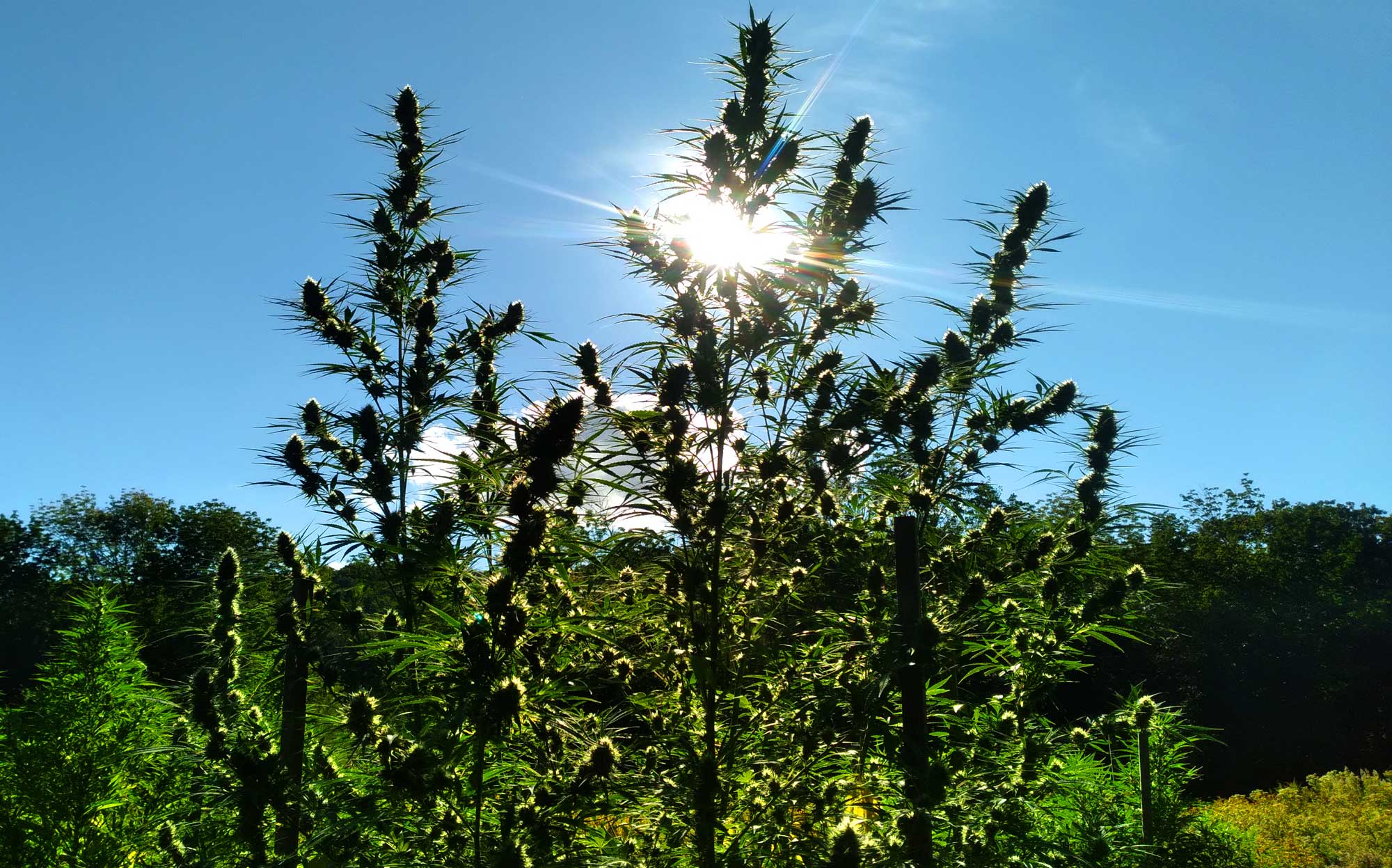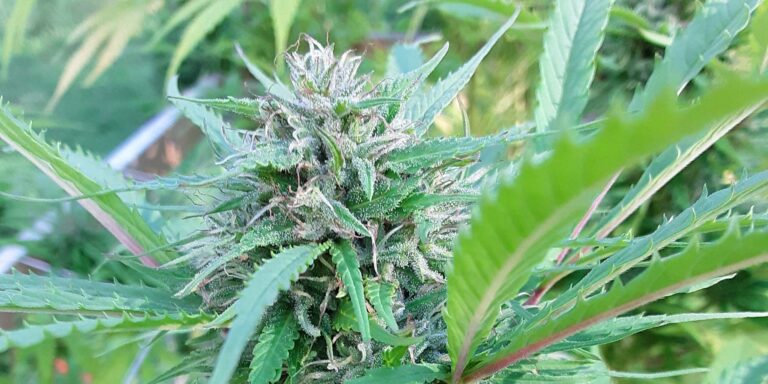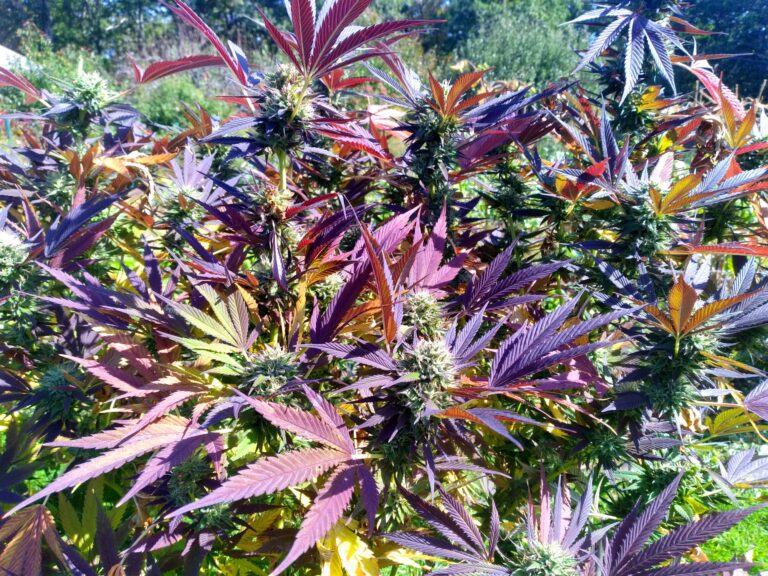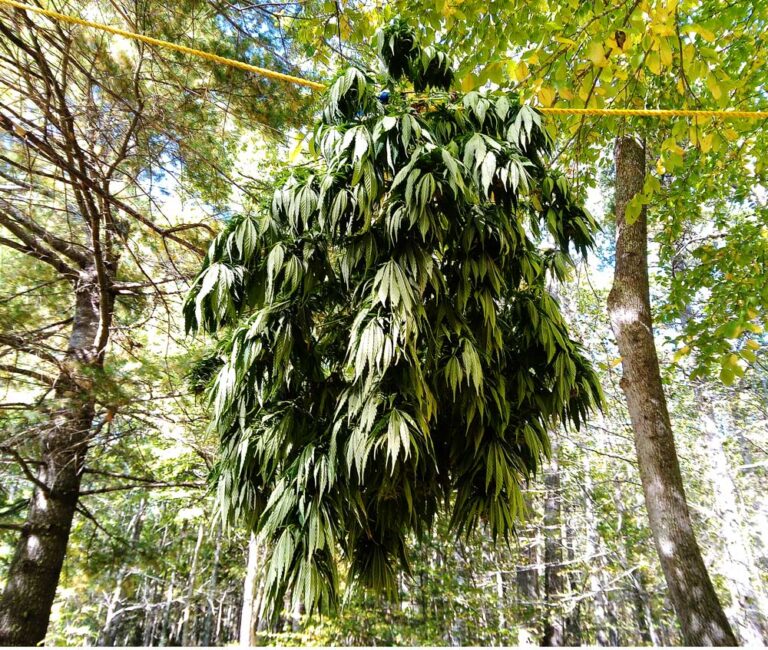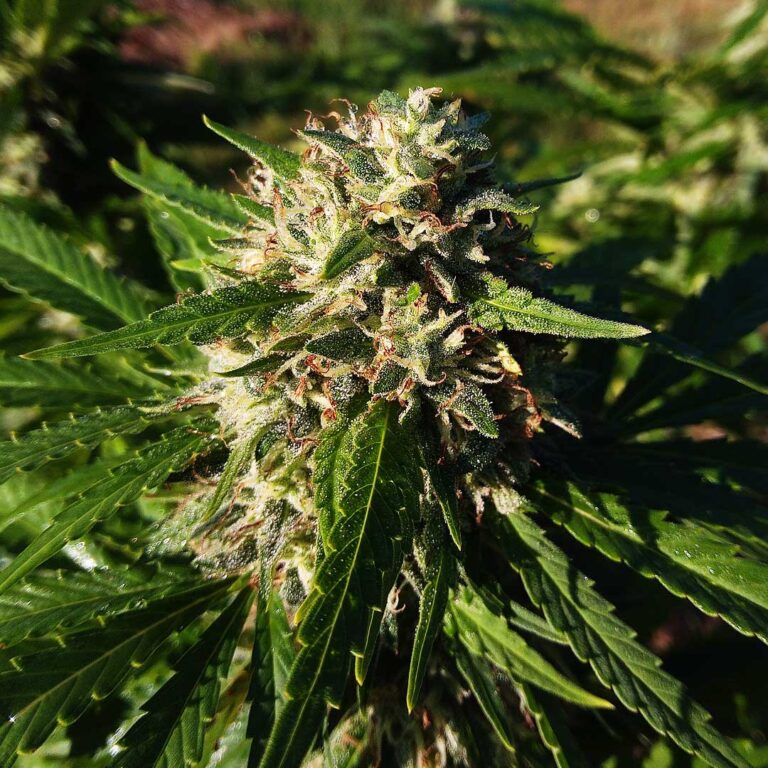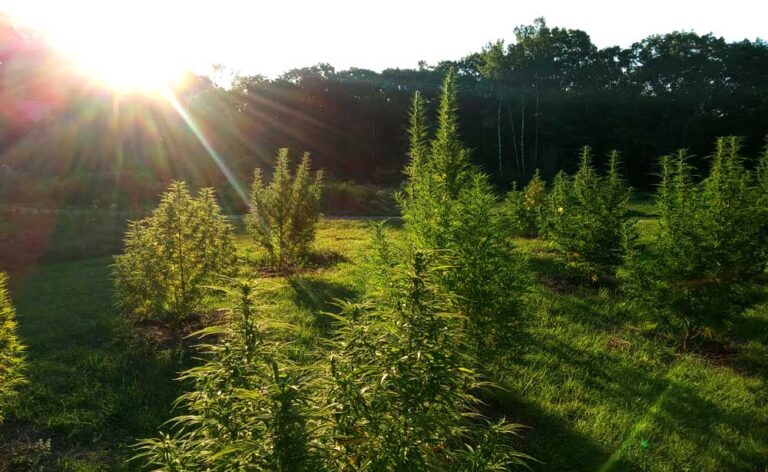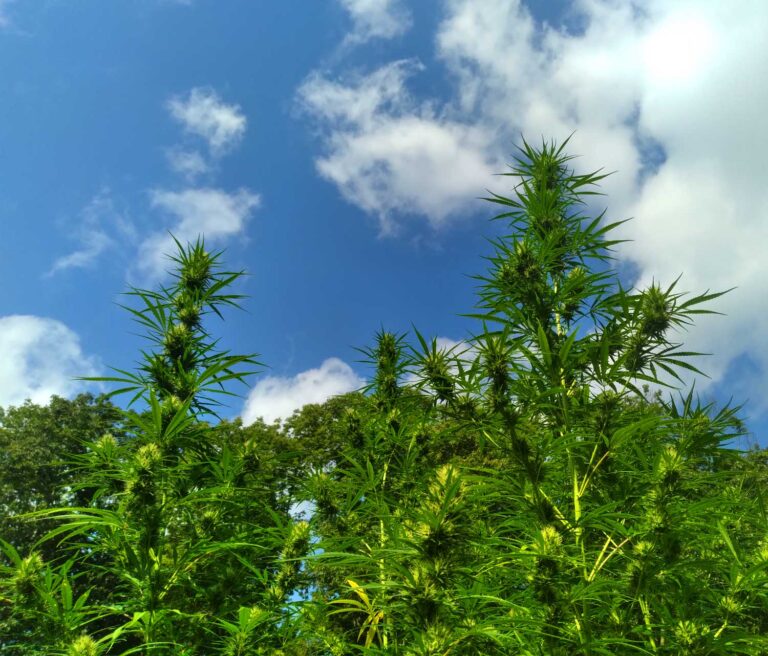Flowering Hemp
Without a doubt the most exciting part of growing hemp is the flowering phase, which begins in mid-late summer as the days begin to shorten. This is when the plants focus all their energy on developing flowers. In the wild these flowers would get pollinated by male hemp plants and create seeds for a new generation of hemp plants the following year. We intentionally remove any male plants from the field so the remaining females grow seedless buds with maximum medicinal strength.
The transition from the vegetative stage to flowering is heralded by “the stretch,” a period of very rapid vertical growth that creates lots of space on the plant for flowers to develop. Here in Maine this starts in late July. The plants grow so quickly that you can literally see the growth happening day to day. It’s crucial that the plants are healthy and have all the nutrients and water they need to “set the table” for the flowering phase.
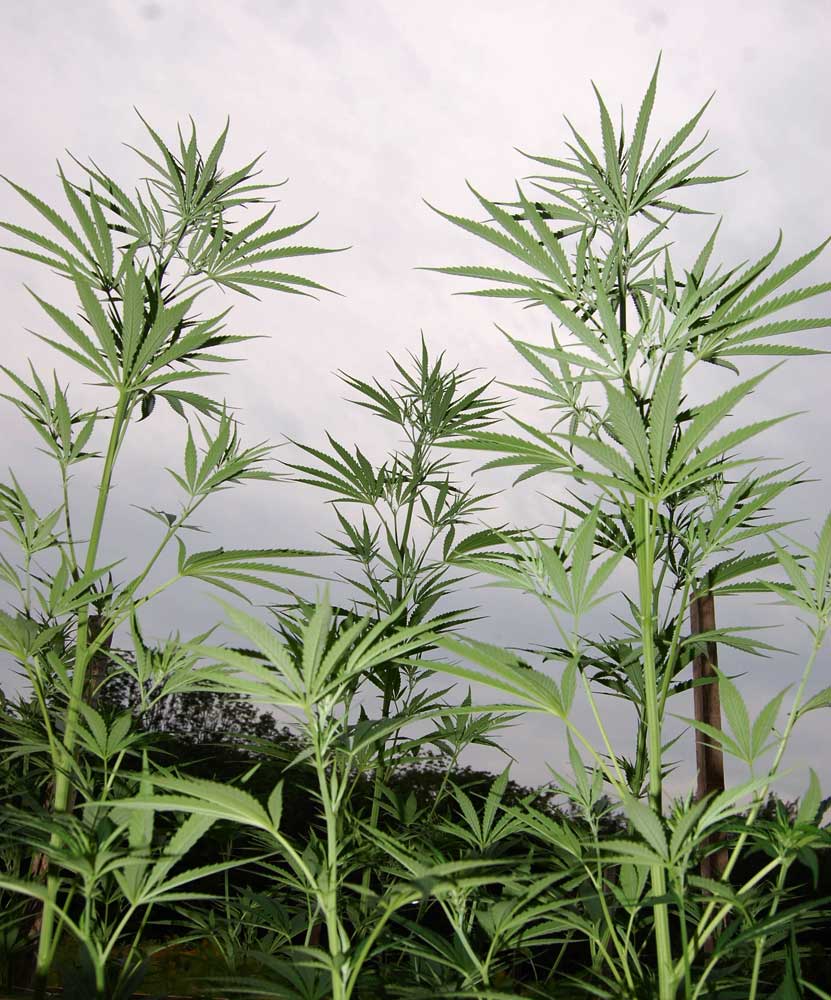
Once the stretch is done, we start to see tiny little white pistils emerge from the bud sites. Slowly at first, then more quickly as summer progresses into fall. By mid-September the flowers are really starting to bulk up. They develop trichomes, the tiny vessels that hold the sticky, fragrant resin containing the valuable cannabinoids and terpenes. These look like little crystals of sugar sprinkled on the leaves and flowers.
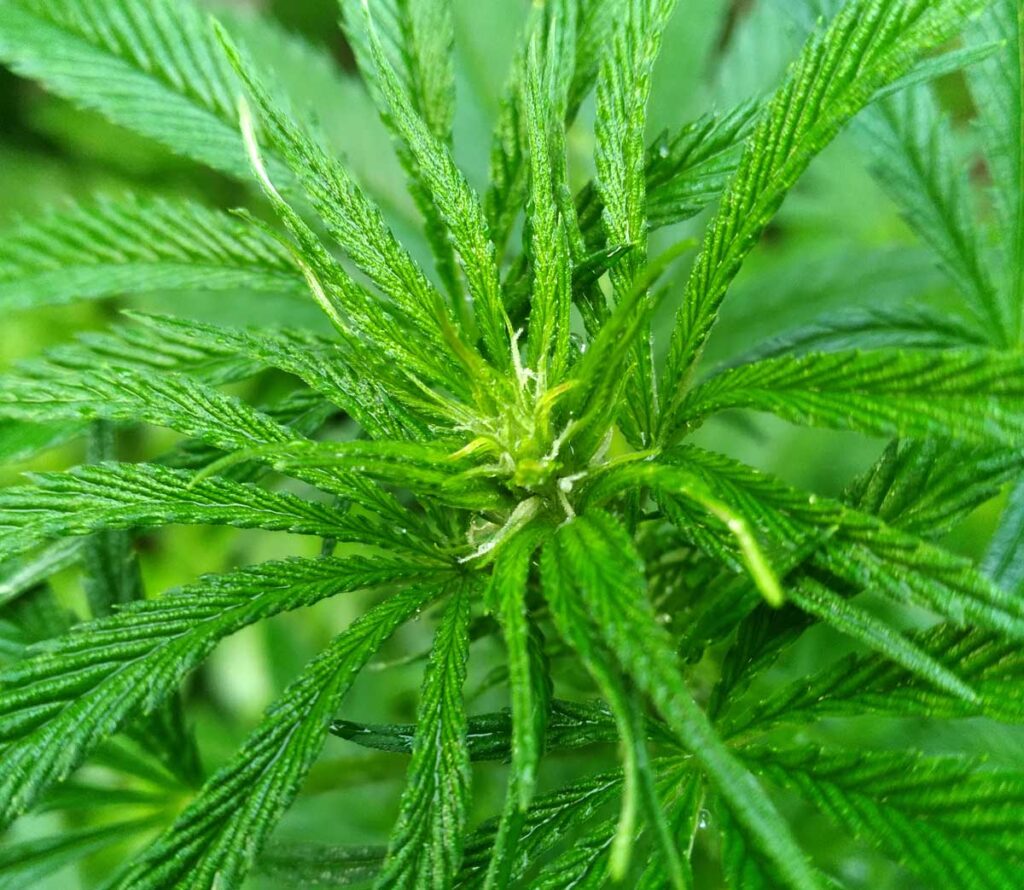
As September progresses the flowers get quite fragrant, particularly in the morning when the terpenes are strongest. This final part of the flowering phase is when the weather can make or break a harvest. Ideally, days are warm and sunny with cool nights. A touch of frost here and there isn’t the end of the word, although a hard freeze can certainly ruin a crop.
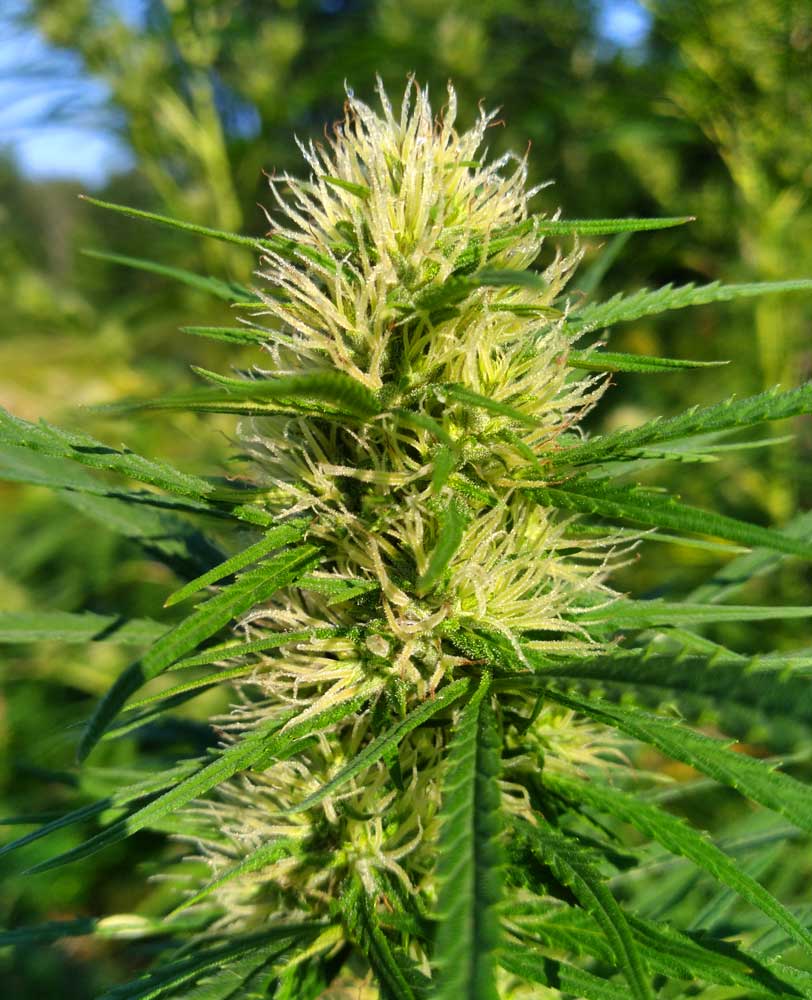
What really keeps hemp farmers up at night is damp, cool stretches that last for more than a day or two–perfect conditions for botrytis, a common mold that can quickly overtake and ruin ripening hemp flowers. The best defense against this threat is having plenty of airflow within each plant’s canopy and between plants, keeping the plants in top health, and growing in a site where morning sun can quickly dry the flowers after a heavy dew or overnight shower. Mold-resistant genetics are also really important when growing outside in New England.
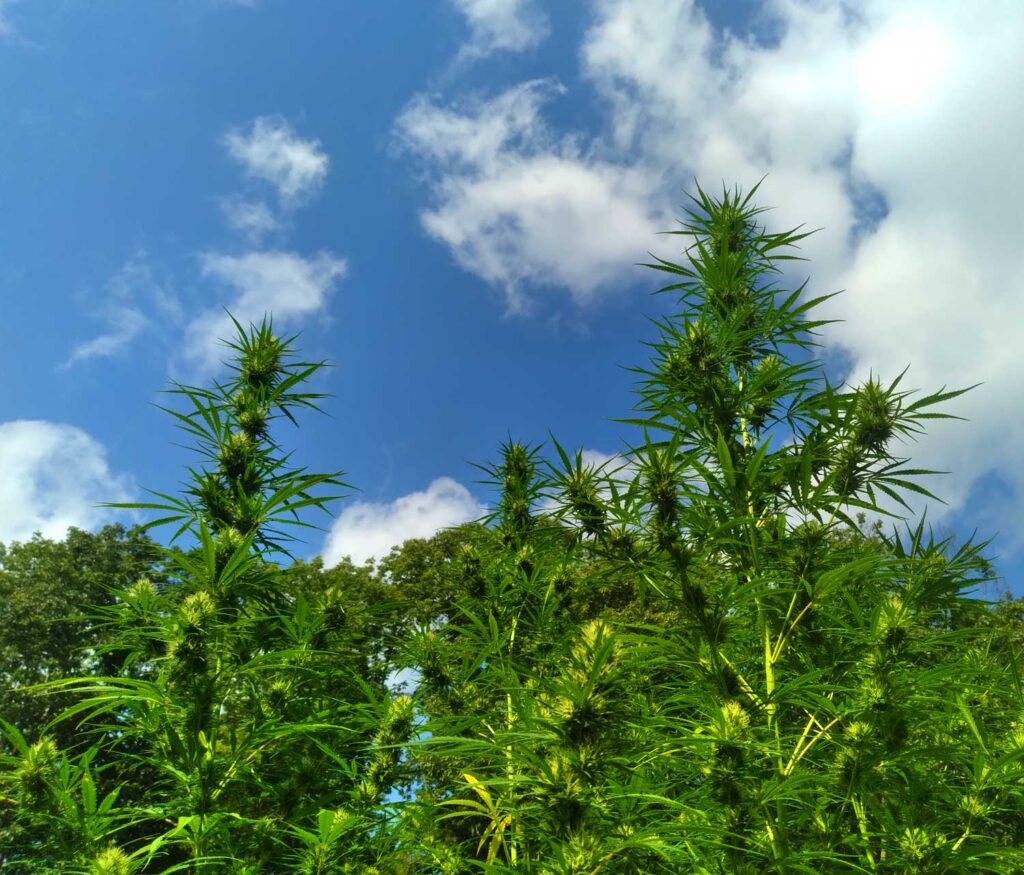
Toward the end of flowering, the hemp leaves turn colors and begin to fall as the annual plant uses up remaining nutrients stored in the leaves to develop the flowers. In the final weeks the flowers can get quite plump and heavy, in some cases requiring support for the branches to avoid breakage. We like to use trellises which also help protect the plants in high winds, like the fall nor’easters that we often get in Maine after Labor Day. This year we had a hurricane land about 100 miles up the coast in early September, which caused some damage to the hemp but nothing catastrophic.
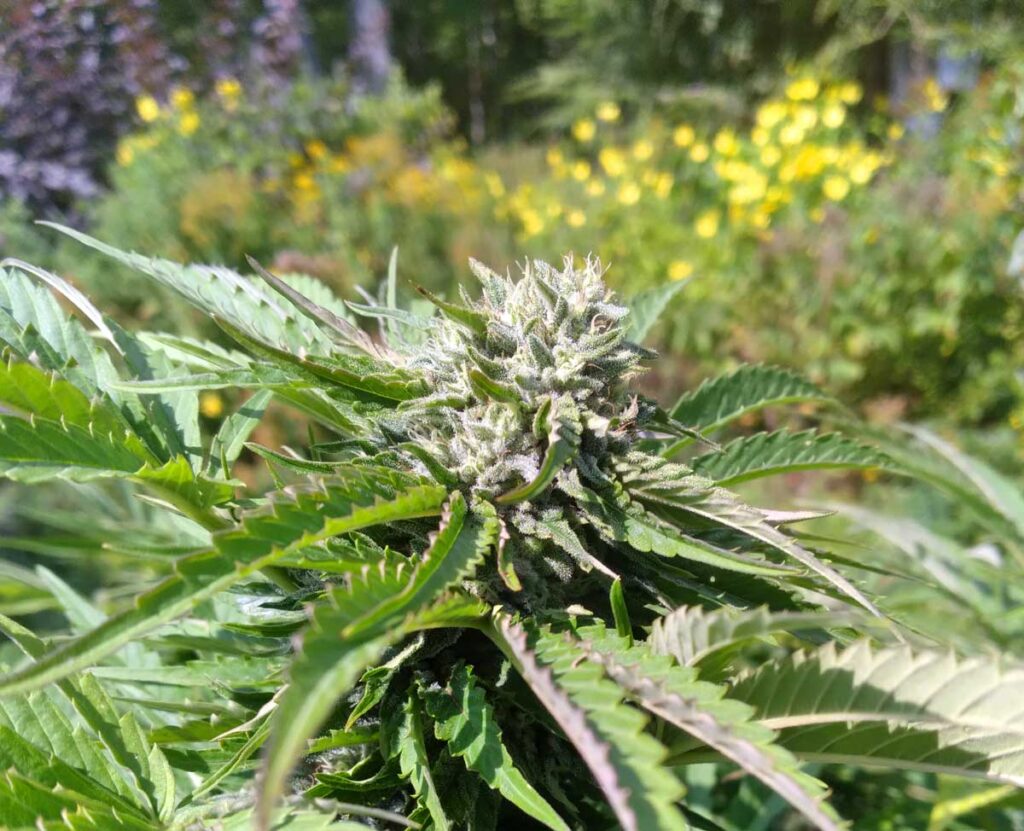
The flowering phase is definitely an exciting (and sometimes nerve-wracking) time for hemp growers. There’s nothing like standing in the hemp field in the golden afternoon light of late September, inhaling the exotic fragrance and watching the gorgeous flowers swaying gently in the breeze.


